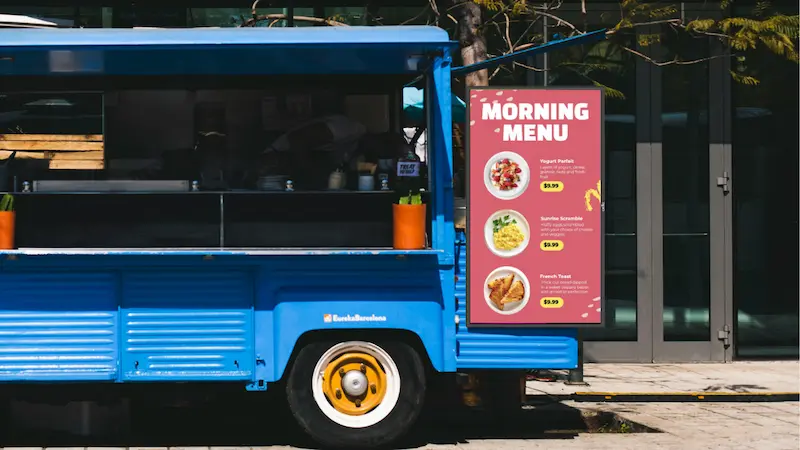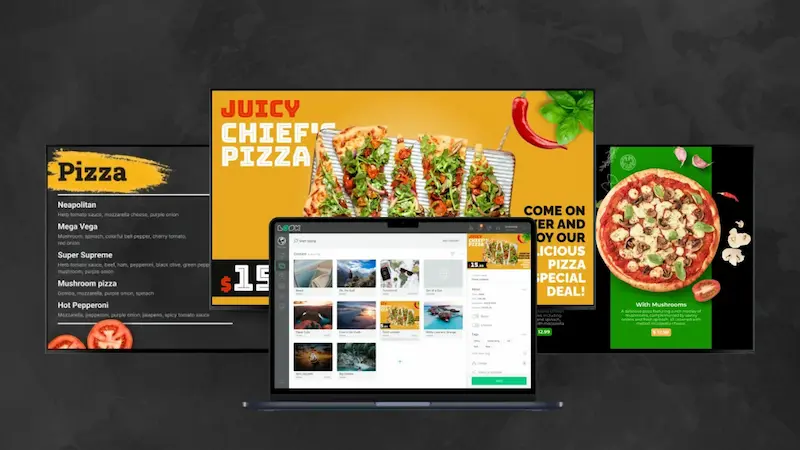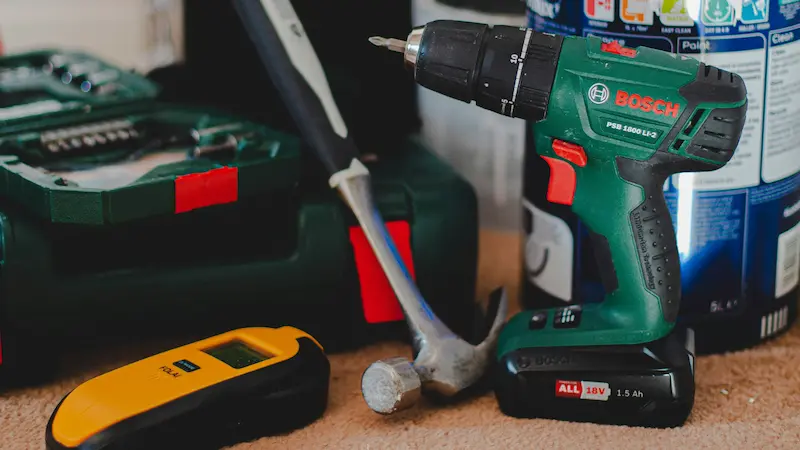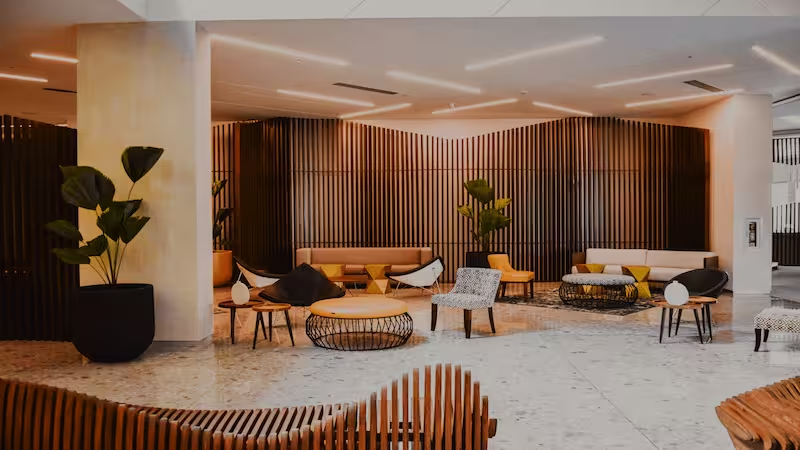
Table of Content
The drive‑thru menu has evolved into a powerful digital system that controls how customers perceive value and what they order. After a wave of upgrades during the pandemic, many quick‑service restaurant (QSR) operators are asking whether digital menu boards deliver a predictable return on investment or whether they are just an expensive gamble.
In this article, we’ll examine sales performance, capital costs, reliability specifications, and compliance requirements through the lens of McDonald's, which invested $2.8 billion in technology and pioneered digital menu board adoption at scale. By the end, you'll have a framework for deciding whether upgrading makes sense for your operation.
Why Menu Boards Matter: Value Perception and Sales
McDonald's CEO Chris Kempczinski made a revealing admission in August 2025 that "The single biggest driver” of what shapes a consumer's overall perception of McDonald's value is the menu board.
Not the food quality. Not the service speed. The menu board itself.
He acknowledged that customers are "too often" seeing combo meals over $10 as poor value, and it’s shaping value perception in a negative way. The world's largest QSR chain, with all its resources and data, had to recalibrate because what they presented on the board was driving away customers.
Your menu board is not only displaying prices but actively shaping whether customers think you're worth their money.
McDonald's responded by working with franchisees to reshape what appears on screen. They launched the McValue platform in January 2025, comprising the $5 Meal Deal, "Buy One, Add One for $1" offers, and eight Extra Value Meals designed to keep combos under $10. All of it aimed at winning back lower-income diners who'd shifted to cooking at home when restaurant prices jumped 40% between 2019 and 2024.
Key TakeAway: QSR digital menu boards give you the flexibility to respond when value perception deteriorates. Static boards lock you in until you can afford to reprint everything.
Measurable Benefits
Sales and order value
A Total Economic Impact study commissioned by Samsung and conducted by Forrester estimated that implementing outdoor digital menu boards at a 10‑store pilot delivered a 196% return on investment, paid for themselves in 11 months, and increased average order value by 2.5%. The study also reported a net present value of US$1.65 million over five years and a $30 000 annual reduction in printing costs per store.
In Q2 2019, when McDonald's first rolled out digital menu boards across U.S. locations, same-store sales climbed 5.7%. Former CEO Steve Easterbrook noted that the dynamic boards were doing what they're designed to do by getting customers to add high-margin add-ons. By 2024, McDonald's digital business (mobile ordering, delivery, digital menu boards) had grown to $3 billion globally.
Traffic and wait times
The Forrester study found that digital menu boards increased drive‑thru customer traffic by 9.1 % and reduced wait times by 5.75 %. Separately, the 2020 SeeLevel HX QSR Drive‑Thru Study observed that digital menu boards reduced service time by 12.3 seconds, saving about US$27,922.50 per location per year.
Upselling and promotional conversion
SeeLevel HX also noted that order‑confirmation boards (which integrate with digital menu boards) saved US$39,138 per store annually, while pre‑sell boards and suggestive‑selling features further cut service times. Forrester’s study reported a 2 % increase in promotional conversion after digital boards were deployed. These are small percentages that gradually compound across your system.
Real-world case study: Slim Chickens
When Slim Chickens, based in Fayetteville, Arkansas, switched from static to digital boards in 2014, co-founder Greg Smart saw immediate results. Dessert sales doubled, and drive-thru times decreased.
Smart could remotely change menu positions, feature specials, and even adjust prices by daypart. "We have it set to populate the display with new content automatically every 5 minutes," he said. The result was fewer anxious customers squinting at the menu, faster ordering, and better sales on high-margin items.
The cost was roughly 2.5 times what static boards would've run. Smart considered it worthwhile. The brand modernized, throughput improved, and dessert sales doubled.
Customer share
During the 12 months ending March 2021, QSRs captured 70.2% of all dining dollars and 82.9% of restaurant traffic. Drive-thru efficiency isn't optional anymore.

What Does a Digital Menu Board System Cost?
A major obstacle to adoption is cost. Unlike static signs, a digital system involves displays, enclosures, network hardware, power, and content management. Costs vary by configuration and region, but credible sources provide useful ranges:
- Per‑board cost: A McDonald’s franchisee with multiple locations revealed in an X(formerly Twitter) post that digital menu board setup costs US$20,000–30,000 and has a 5–7‑year lifespan. Drive-thru menu boards must withstand harsh outdoor conditions, so high‑brightness, weatherproof displays cost more than consumer TVs.
- Full installation: The same operator estimated US$75,000 to install a complete system for a standard drive‑thru and US$125,000 for a dual‑lane configuration. Replacement after six years costs around US$30,000, and repairs run US$500–1,500 per incident.
- Incremental costs: Research from Nation’s Restaurant News cites QSR operators who invested roughly US$10,000 per unit to upgrade static boards to digital and reported immediate throughput and sales benefits.
Industry vendor reality:
Based on experience working with QSR operators across regions, here is a hardware and installation cost breakdown from Look experts:
Static menu boards (traditional baseline): $3,000–8,000 depending on size and number of doors
Digital menu boards vary by approach:
- Single outdoor-rated 55" display with enclosure: $1,000–5,000 (basic systems)
- Premium weatherproof LED displays: $20,000+ per screen for harsh environments
- Complete drive-thru system (menu boards + presell boards + canopy + speaker posts + clearance bars): $3,000–10,000 for basic setups, scaling up based on lane count and features
Component breakdown (industry averages):
- Outdoor-rated 55" commercial displays: $1,500–5,000 each
- Media players (commercial-grade): $150–300
- Mounting hardware and enclosures: $100–500 per screen
- Electrical work: $150–500 per screen location
- Software/CMS subscriptions: $15 per screen monthly
- Installation labor: Varies by complexity and site conditions
What explains the price gap?
The McDonald's franchisee's $75,000–125,000 figures represent turnkey installations that include:
- Multiple screens (main menu board, presell board, confirmation board)
- Professional outdoor enclosures with thermal management
- Complete electrical and network infrastructure
- POS integration
- Professional installation and commissioning
- Extended warranties and service agreements
Meanwhile, vendors quoting $3,000–10,000 systems may be referencing:
- Simpler configurations with fewer screens
- Standard enclosures rather than premium weatherproof solutions
- Less comprehensive installation services
- Shorter warranty periods
Armagard, a drive-thru digital signage manufacturer, notes that fully integrated outdoor solutions can "run into the hundreds of thousands" for multi-location deployments, while basic setups might cost "as little as a few hundred pounds", but warns that cheap systems require frequent hardware replacement, which ultimately erodes any initial savings.
The hidden costs:
Beyond initial installation, operators should budget for:
- Ongoing software subscriptions: $162.00 annually per screen (with Look DS)
- Preventive maintenance: Cleaning, firmware updates, component inspection
- Bandwidth: Stable internet for content delivery and POS integration
- Content creation: Design time or professional services for menu updates
- Replacement cycle: Full system refresh every 5–7 years
Print cost savings offset
Forrester Research found that QSRs save approximately $30,000 per year per location by eliminating printing, shipping, and deployment labor for static menu updates. For a 10-location chain running monthly promotions, that's $39,000 annually in avoided costs, meaning a $75,000 system could pay for itself in roughly two years through print savings alone, before counting any sales lift.
So while upfront costs range dramatically, real-world returns depend heavily on system quality, integration depth, and maintenance practices.

Reliability: What Can Go Wrong?
Environmental Risks and Hardware Specs
Outdoor screens operate in direct sunlight, rain, snow, and grease‑laden environments. The hardware must be rated accordingly. Restaurant Brands International (RBI), parent of Burger King and Tim Hortons, retrofitted more than 10,000 drive‑thrus with digital screens that have IP56‑rated enclosures (protecting against dust and strong water jets) and high‑availability redundancy to keep screens online. The systems can withstand extreme temperatures, and remote payment and loyalty integration are built in.
Poor design can lead to costly failures. A technical review from the Kiosk Industry reported that some McDonald’s units using Samsung OH55F displays failed because their enclosures lacked adequate airflow, where heat buildup caused irreversible LCD damage costing about US$10,000 per display.
They emphasised that brightness above 2,000 nits is often unnecessary. Instead, operators should prioritise contrast ratio, refresh rate, thermal management, and a fanless design to enhance lifespan and reduce maintenance. Fan‑cooled designs pull in grease and moisture, clogging filters and increasing downtime.
Maintenance and Lifespan
Digital menu boards are rated for continuous operation over 5–7 years, but achieving this lifespan requires regular cleaning and proactive ventilation. McDonald’s displays that lacked ventilation suffered early failures. Operators should allocate budgets for preventive maintenance, such as cleaning vents, replacing filters, and updating firmware. Weather‑proofing (IP ratings), anti‑glare glass, and temperature control should be specified during procurement. Warranties and extended service agreements from reputable manufacturers (e.g., 5‑year warranties highlighted by some vendors) can mitigate unplanned costs.
Compliance and Accessibility
Regulatory compliance is another reliability factor. The U.S. Food & Drug Administration requires chain restaurants with 20 or more locations to display calorie information on menus and menu boards and to provide additional nutrition information upon request. Digital systems can easily update calorie information across locations; however, they must be configured to always show the required statements about daily caloric intake and nutrition availability. Failure to comply can result in fines and reputational damage.
McDonald's Technology Investments: A Case Study in Scale
McDonald's provides a useful blueprint for understanding how serious technology investment plays out at scale.
In Q4 2023, McDonald's invested $2.4 billion in capital expenditures, a 24% year-over-year increase. By 2024, that figure climbed to $2.8 billion. These investments support the company's "Accelerating the Arches" growth strategy: 50,000 restaurants by 2027, loyalty program expansion from 150 million to 250 million 90-day active users.
In December 2023, McDonald's announced two partnerships that signal where the industry is headed:
Google Cloud partnership: McDonald's partnered with Google Cloud to install AI-infused analytics and distributed cloud servers (Google Distributed Cloud appliances with onboard TPUs) in thousands of restaurants worldwide. The goal is to accelerate automation innovation and help restaurant managers reduce disruptions proactively.
The technical implementation uses edge computing that executes inference locally in under 100 milliseconds, syncs overnight, and keeps restaurants operational during network outages. Dynamic menu boards now pull live weather, traffic, and inventory data. Reinforcement-learning engines build bundles and adjust prices in real time.
Accenture partnership expansion: McDonald's also expanded its work with Accenture to leverage edge technology and generative AI across restaurants. Accenture is training McDonald's global workforce through learning programs, boot camps, and courses focused on AI, data, and edge computing skills.
The aim is to accelerate automation so managers can spot and solve problems quickly. Less complexity for the crew. Better food quality for customers.
What's relevant for smaller operators: McDonald's isn't treating digital menu boards as standalone investments. They're part of an integrated ecosystem of self-service kiosks, mobile ordering, loyalty programs, and predictive analytics. Everything connects.
Strategic Benefits and Use Cases
Dynamic Pricing and Predictive Selling
Digital boards allow operators to change prices or promotions in real time. RBI’s predictive selling technology integrates loyalty data and local factors like weather to suggest menu items and increase average check size. Forrester’s TEI study noted a 2 % increase in promotional conversion after switching to digital. Geofencing and data analytics enable dayparting by showing breakfast menus in the morning and lunch menus later, and can help adjust pricing based on demand or supply constraints.
Upselling and Design Flexibility
Digital systems can highlight limited‑time offers and high‑margin items at the point of decision. Slim Chickens doubled its dessert sales and reduced drive‑thru times after installing digital boards. The chain considered the upgrade cost worthwhile because it modernized the brand and improved throughput. Another operator invested US$10,000 per unit and saw immediate improvements.

Integration with Self‑Service Kiosks and Mobile
McDonald’s and other QSRs are pursuing a multicloud strategy that links digital menu boards with self‑service kiosks, mobile ordering, and loyalty programmes. For example, RBI’s screens support remote contactless payment and loyalty integration. This integration streamlines order fulfillment, reduces labor reliance, and provides data for targeted promotions.
Brand Consistency and Compliance
Digital menus ensure consistent imagery and nutrition disclosures across locations. They can automatically update calorie counts when recipes change, helping chains comply with the FDA requirements. For franchise systems, using a centralized content management system reduces the risk of individual operators deviating from corporate brand guidelines.
Decision Framework: Is It Worth It?
Whether digital menu boards are a reliable investment depends on how effectively they are specified, deployed, and managed. Use the following considerations when planning a project:
- Define Objectives and KPIs: Identify whether your goal is to reduce service times, increase order value, modernize the brand, or satisfy calorie‑labeling mandates. Each objective influences the ROI equation.
- Perform a Cost‑Benefit Analysis: Use the cost ranges above to estimate the total cost of ownership over the board’s 5–7‑year life. Include installation, replacement, and maintenance. Compare this against projected sales lifts (2–5 %) and cost savings (e.g., $30,000 per year in printing costs). Evaluate whether an 11‑month payback is realistic for your location.
- Specify Hardware for Your Environment: Select displays with appropriate IP ratings (IP56 or higher for harsh climates) and operating temperature ranges (–30 °C to 55 °C). Prioritise contrast ratio and thermal management over unnecessary brightness.
- Plan for Maintenance and Redundancy: Budget for preventive cleaning and replacement of parts. Ask vendors about fanless designs to minimize grease and consider redundant systems to avoid downtime. Look Digital Signage gives you remote monitoring with automated screenshots, real-time playback verification, and detailed proof of play reports that show exactly what was displayed, when, and for how long across all locations. You can catch display failures before customers notice them and troubleshoot remotely without dispatching technicians.
- Integrate with POS, CRM, and Loyalty Systems: Seamless integration enables dynamic pricing, real‑time inventory updates, and loyalty rewards, enhancing upselling opportunities. On Look Digital Signage software, you can even use a Google Sheet to automatically update prices with every edit to the pricing cell using the Zapier integration. Alternatively, you can use the same integration to connect the menu board to your POS, CRM, and Loyalty systems without writing a line of code.
- Comply with Menu‑Labeling Laws: Ensure your templates display required calorie information and disclosures. Digital boards make compliance easier, but only if configured correctly. That’s why our QSR-specific templates provide professionally designed starting points that you can customize to meet regulatory requirements. For a fully custom design, you can use the AI Layout Wizard to generate menu board layouts in seconds based on your specifications so you can achieve compliant designs without hiring a designer.
- Test and Iterate: Pilot digital boards at a few locations to validate assumptions before full rollout. Monitor metrics such as average ticket, service time, and promotional conversion to fine‑tune content.
QSR Menu Boards are Reliable When Done Right
Digital menu boards can deliver strong ROI and improved guest experiences. But they're not guaranteed to succeed simply by being installed. You need to execute well.
That means investing properly in hardware (real IP ratings, fanless cooling, avoiding the "browning" problem that kills screens early), maintaining the system throughout its lifespan, and staying compliant with FDA labeling requirements. Your execution matters as much as your budget.
Explore how Look Digital Signage helps you manage menu content across locations with cloud-based tools designed for QSR operators. The platform includes intuitive design features, remote monitoring, and flexible deployment options that scale from single locations to enterprise chains.
Book a demo or try it free for 14 days and see how the right platform makes all the difference.








